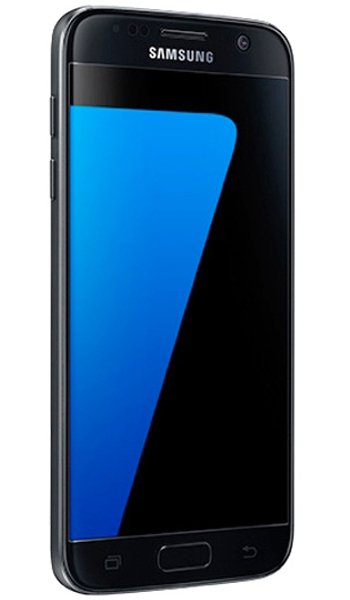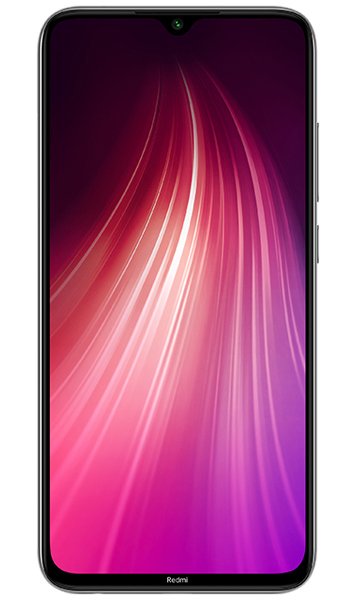Samsung Galaxy S7 vs Xiaomi Redmi Note 8 Comparison and Differences
Smartphone 1

Samsung Galaxy S7
Smartphone 2

Xiaomi Redmi Note 8
Smartphone 3
Samsung Galaxy S7 or Xiaomi Redmi Note 8 Specs Comparison
or
 Common specs
Common specs
| Brand and model | Samsung Galaxy S7 | Xiaomi Redmi Note 8 | |
| Rating | (+) | (+) | |
| Release date | 2016, February | 2019, August | |
| Dimensions (HxWxD) | 142.4 x 69.6 x 7.9 mm | 5.61 x 5.61 x 2.74 in | 158.3 x 75.3 x 8.4 mm | 6.23 x 6.23 x 2.96 in | |
| Weight | 152 g | 5.36 oz | 190 g | 6.7 oz | |
| Body Build | Front/back glass (Gorilla Glass 4), aluminum frame | Front/back glass (Gorilla Glass 5) | |
| Case | buy from Amazon | buy from Amazon | |
| Colors | Black, White, Gold, Silver, Pink Gold | Neptune Blue, Moonlight White, Space Black | |
| Battery | 3000 mAh, Non-removable Li-Ion | 4000 mAh, Non-removable Li-Po | |
| Battery life |
Talking time - Up to 22 h (3G) Music play - Up to 62 h |
||
| Approximate price | 290 EUR | 175 EUR | |
| Check price | from Amazon | from Amazon |
 Screen
Screen
| Technology | Super AMOLED | IPS LCD | |
| Touchscreen | capacitive touchscreen | capacitive touchscreen | |
| Display colors | 16M | 16M | |
| Screen size | 5.1" in | 6.3" in | |
| Screen area | 71.5 cm2 | 97.4 cm2 | |
| Screen format | 16:9 (height:width) | 19.5:9 (height:width) | |
| Screen to body ratio | 72.1% | 81.7% | |
| Screen resolution | 1440 x 2560 px | 1080 x 2340 px | |
| Screen PPI /points per inch/ | 577 PPI | 409 PPI | |
| Screen protection | Corning Gorilla Glass 4 | Corning Gorilla Glass 5 | |
| Other specs | - Always-on display | ||
| Screen protector | buy from Amazon | buy from Amazon |
 Camera and Video
Camera and Video
| Rear camera, main | 12 MP, Single | 48 MP, Quad | |
| Camera specs | -12 MP, f/1.7, 26mm (wide), 1/2.55'', 1.4µm, Dual Pixel PDAF, OIS | -48 MP, f/1.8, 26mm (wide), 1/2", 0.8µm, PDAF -8 MP, f/2.2, 13mm (ultrawide), 1/4", 1.12µm -2 MP, f/2.4, 1/5", 1.75µm (dedicated macro camera) -2 MP, f/2.4, 1/5", 1.75µm, depth sensor |
|
| Functions | LED flash, auto-HDR, panorama | LED flash, HDR, panorama | |
| Video | 2160p@30fps, 1080p@60fps, 720p@240fps, HDR, dual-video rec. | 2160p@30fps, 1080p@30/60/120fps, gyro-EIS | |
| Front camera, selfie | 5 MP, Single | 13 MP, Single | |
| Specifications | 5 MP, f/1.7, 22mm (wide), 1/4.1'', 1.34µm | 13 MP, f/2.0, 1.12µm | |
| Functions | Dual video call, Auto-HDR | HDR, panorama | |
| Video | 1440p | 1080p@30fps |
 Performance
Performance
| Operating system - OS | Android 6.0 (Marshmallow), upgradable to Android 8.0 (Oreo); TouchWiz UI | Android 9.0 (Pie); MIUI 10 | |
| Chipset | - Exynos 8890 Octa (14 nm) | - Qualcomm SM6125 Snapdragon 665 (11 nm) | |
| CPU | - Octa-core (4x2.3 GHz Mongoose & 4x1.6 GHz Cortex-A53) | - Octa-core (4x2.0 GHz Kryo 260 Gold & 4x1.8 GHz Kryo 260 Silver) | |
| GPU | Mali-T880 MP12 | Adreno 610 | |
| External memory | microSD, up to 256 GB (uses SIM 2 slot) - dual SIM model only | microSD, up to 256 GB (dedicated slot) | |
| Internal memory | 32/64 GB, 4 GB RAM | 32GB 3GB RAM, 64GB 4GB RAM, 64GB 6GB RAM, 128GB 4GB RAM, 128GB 6GB RAM |
 Benchmark
Benchmark
| Antutu 10 Total | 227941 | ||
| Antutu 10 CPU | 84510 | ||
| Antutu 10 GPU | 34789 | ||
| Antutu 10 Mem | 51208 | ||
| Antutu 10 UX | 84510 | ||
| Antutu 8 Total | 189150 | 173592 | |
| Antutu 7 Total | |||
| GeekBench 6 Single Core | 287 | 323 | |
| GeekBench 6 Multi Core | 625 | 1062 | |
| GeekBench 6 OpenCL | 518 | 293 | |
| GeekBench 6 Vulkan | 477 | ||
| GeekBench 5 Single Core | 270 | 309 | |
| GeekBench 5 Multi-Core | 718 | 1328 | |
| GeekBench 4 Single Core | 1536 | 1499 | |
| GeekBench 4 Multi-Core | 3718 | 5543 | |
| GeekBench 4 RenderScript | 4791 | ||
| GeekBench 4 Battery | 1939 |
 Communication and Connectivity
Communication and Connectivity
| SIM card | Single SIM (Nano-SIM) - G930FHybrid Dual SIM (Nano-SIM, dual stand-by) - G930FD | Dual SIM (Nano-SIM, dual stand-by) | |
| Network | GSM / HSPA / LTE | GSM / HSPA / LTE | |
| Bands | -2G - GSM 850 / 900 / 1800 / 1900 - SIM 1 & SIM 2 - G930FD -3G - HSDPA 850 / 900 / 1700(AWS) / 1900 / 2100 - G930F, G930FD, G930W8 -4G - LTE band 1(2100), 2(1900), 3(1800), 4(1700/2100), 5(850), 7(2600), 8(900), 12(700), 13(700), 17(700), 18(800), 19(800), 20(800), 25(1900), 26(850), 28(700), 38(2600), 39(1900), 40(2300), 41(2500) - G930F, G930FD LTE band 1(2100), 2(1900), 3(1800), 4(1700/2100), 5(850), 7(2600), 8(900), 12(700), 13(700), 17(700), 18(800), 19(800), 20(800), 25(1900), 29(700), 30(2300), 38(2600), 39(1900), 40(2300), 41(2500) - G930W8 |
-2G - GSM 850 / 900 / 1800 / 1900 - SIM 1 & SIM 2 -3G - HSDPA 850 / 900 / 1700(AWS) / 1900 / 2100 HSDPA 850 / 900 / 2100 -4G - LTE band 1(2100), 2(1900), 3(1800), 4(1700/2100), 5(850), 7(2600), 8(900), 20(800), 38(2600), 40(2300) LTE band 1(2100), 3(1800), 5(850), 8(900), 38(2600), 40(2300), 41(2500) |
|
| Speed | HSPA 42.2/5.76 Mbps, LTE-A (3CA) Cat9 450/50 Mbps | HSPA 42.2/11.5 Mbps, LTE-A | |
| GPRS | Yes | Yes | |
| Edge | Yes | Yes | |
| Wi-Fi | Wi-Fi 802.11 a/b/g/n/ac, dual-band, Wi-Fi Direct, hotspot | Wi-Fi 802.11 a/b/g/n/ac, dual-band, Wi-Fi Direct, hotspot | |
| GPS | Yes, with A-GPS, GLONASS, BDS | Yes, with A-GPS, GLONASS, BDS | |
| NFC | Yes | ||
| USB | microUSB 2.0, USB Host | 2.0, Type-C 1.0 reversible connector, USB On-The-Go | |
| Bluetooth | 4.2, A2DP, LE, aptX | 4.2, A2DP, LE | |
| Harmful irradiation |
SAR - 1.40 W/kg (head) 1.59 W/kg (body) SAR EU - 0.41 W/kg (head) 0.62 W/kg (body) |
SAR - 0.26 W/kg (head) 1.00 W/kg (body) SAR EU - 0.19 W/kg (head) 1.09 W/kg (body) |
 Music and Audio
Music and Audio
| Radio | No | FM radio | |
| Headphone jack | Yes | Yes | |
| Others | - 24-bit/192kHz audio -Active noise cancellation with dedicated mic |
 Other features
Other features
| Sensors | - Fingerprint (front-mounted), accelerometer, gyro, proximity, compass, barometer, heart rate, SpO2 | - Fingerprint (rear-mounted), accelerometer, gyro, proximity, compass , Infrared port | |
| Other extras |
- ANT+ -S-Voice natural language commands and dictation - Fast battery charging (Quick Charge 2.0) -Qi/PMA wireless charging (market dependent) - - - Samsung Pay (Visa, MasterCard certified) -IP68 dust/water proof (up to 1.5m for 30 mins) |
- Fast battery charging 18W - Splash protection |
|
| Versions |
- Versions: G930F (Global); G930FD (Global; Southeast Asia); G930W8 (Canada) Also known as Samsung Galaxy S7 Duos with dual-SIM card slots |
Reviews and Opinions on Samsung Galaxy S7 and Xiaomi Redmi Note 8
If you had to recommend one of these phones to a friend, which one would it be and why? Share your arguments using the Add Opinion button!

